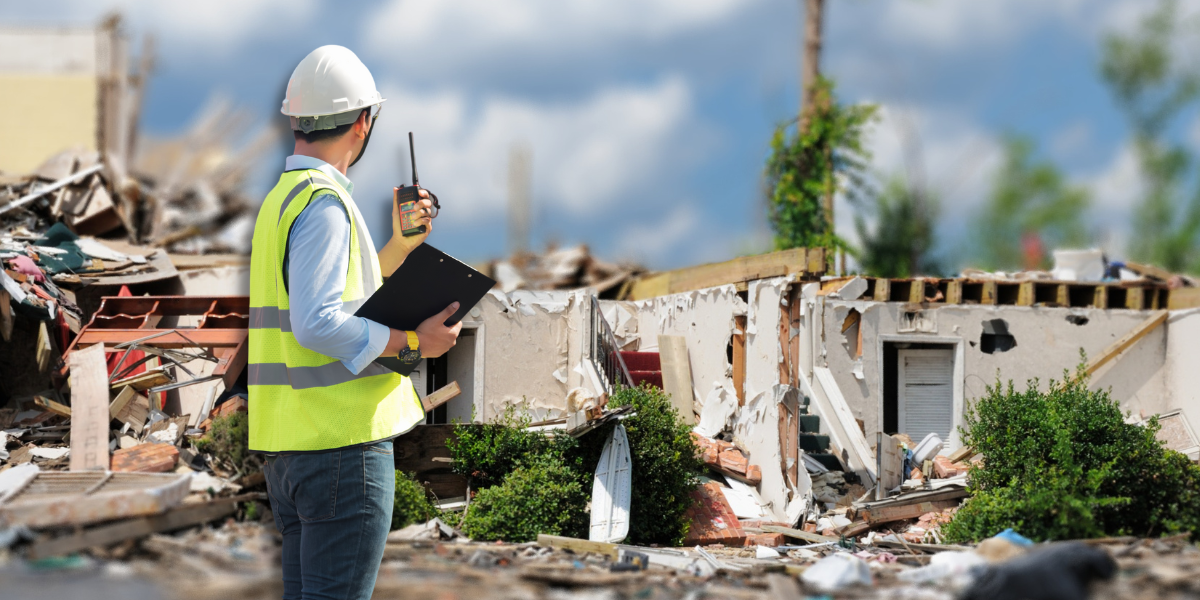
When disaster strikes, the first responders—firefighters, medical personnel, and emergency services—are rightfully lauded for their life-saving efforts. However, there's another crucial group that often flies under the radar but is indispensable during disaster recovery: civil engineers.
From mitigating further damage to helping communities bounce back stronger than before, civil engineers play an indispensable role in disaster recovery. In this blog post, we will delve into why you can't afford to overlook civil engineers in times of crisis.
- The Role of Civil Engineers During Disaster Recovery
- Disaster Mitigation and Civil Engineering
- Civil Engineer Operations During a Natural Disaster
- Challenges and Opportunities
The Role of Civil Engineers During Disaster Recovery
Ever wondered who takes charge of the complex task of rebuilding after a disaster? Civil engineers are instrumental in assessing, planning, and reconstructing critical infrastructure.
Disaster Planning and Assessment
When disaster hits, the immediate aftermath is chaotic. Roads may be unusable, buildings compromised, and critical infrastructure like water and electrical systems disrupted. The first role of a civil engineer is to quickly assess the damage and strategize a plan for stabilization. This often involves a multi-disciplinary approach, integrating knowledge from structural engineering, environmental engineering, and geotechnical engineering, among other specialties.
Infrastructure Repair Post-Disaster
The most apparent job of a civil engineer post-disaster is the repair of infrastructure. Civil engineers and/or structural engineers oversee the rebuilding of roads, bridges, and essential structures, ensuring they meet current safety and building codes. This is not merely a matter of reconstruction but often involves significant upgrades to make the systems more resilient to future disasters.
Coordination and Logistics for Disaster Recovery Efforts
Civil engineers work in tandem with city planners, local governments, and various other organizations to coordinate disaster recovery efforts. They help establish temporary shelters, develop alternative transportation routes, and facilitate the movement of emergency supplies. Their role is particularly crucial for the optimal allocation of resources, avoiding bottlenecks, and ensuring a more streamlined recovery process.
Disaster Mitigation and Civil Engineering
Civil engineers don’t just come in after a disaster has occurred; they play a vital role in disaster mitigation as well. This proactive approach helps in reducing the impact of future disasters, saving both lives and resources in the long run.
Flood Control Systems
For regions prone to flooding, civil engineers design intricate flood control systems, such as levees and dams, to minimize damage. The emphasis is on using sustainable materials and advanced engineering techniques to withstand extreme conditions.
Seismic-Resistant Buildings
In earthquake-prone areas, civil engineers employ cutting-edge technologies to design buildings that can withstand tremors. Techniques such as base isolation and energy dissipation devices are being increasingly used to make structures more resilient.
Community Education and Preparedness
Civil engineers often work with local governments to create disaster management plans and educate the community on how to prepare for emergencies. They hold workshops, produce informational materials, and engage with the public to spread awareness.
Civil Engineer Operations During a Natural Disaster
Every moment is precious when a disaster unfolds. Let's delve into how civil engineers act swiftly and strategically to both rescue and recover, all while maintaining a focus on long-term sustainability.
Immediate Response
Civil engineers are often among the first to arrive at the scene of a natural disaster. They assist emergency responders by identifying safe zones for rescue operations, assessing the structural integrity of buildings, and determining the usability of transportation networks.
Data Collection and Analysis
Modern civil engineering relies heavily on data. Engineers use drones, satellite imagery, and geographic information systems (GIS) to collect data, which is then analyzed to identify priority areas for intervention and long-term planning.
Sustainable Rebuilding
Civil engineers use the rebuilding process as an opportunity to implement sustainable practices. Whether it’s by using eco-friendly building materials or designing energy-efficient systems, sustainability is at the forefront of modern civil engineering efforts.
Challenges and Opportunities during disaster recovery
Navigating the realm of disaster recovery comes with its unique set of hurdles. Yet within these challenges, civil engineers find remarkable opportunities for innovation and enhancing community resilience.
Disaster Recovery Challenges
Resource Scarcity
In the wake of a disaster, resources often become stretched thin. Engineers might face limited access to construction materials, skilled labor, or specialized equipment. This constraint can slow down the recovery process and lead to difficult decisions on where to allocate the available resources most effectively.
Coordination Complexity
Managing the many moving parts of disaster recovery is like conducting an orchestra with multiple conductors. Engineers have to collaborate with local governments, NGOs, contractors, and community members, each with their own priorities and agendas. This multi-layered coordination requires excellent communication skills and often involves navigating bureaucratic hurdles.
Technological Limitations
Advancements in engineering technology have been significant, yet they come with limitations. Deploying the latest innovations in disaster-stricken areas might be hindered by poor infrastructure, lack of electrical power, or limited connectivity. These limitations restrict the tools and methods that engineers can employ during the crucial early stages of disaster recovery.
Changing Environmental Conditions
Climate change introduces a host of challenges, as engineers need to anticipate new kinds of extreme weather events and adjust their strategies accordingly. This includes rethinking construction materials and methods to withstand these new conditions, adding another layer of complexity to their work.
Opportunities
Innovation
Constraints often breed creativity. The limitations faced in disaster situations frequently catalyze novel solutions. From modular housing that can be quickly assembled to innovative water purification methods, the challenges posed by disasters often lead to groundbreaking engineering solutions.
Community Resilience
The recovery process offers a chance to rebuild in a way that makes communities more resilient to future disasters. Civil engineers can implement better building standards, develop advanced flood control systems, and use more durable materials. This not only helps in immediate recovery but offers long-term benefits for the community.
Professional Development
Disaster recovery provides an environment rich in complex challenges, making it fertile ground for professional growth. Civil engineers can gain invaluable experience in project management, stakeholder communication, and problem-solving under pressure, skills that are transferable to many other areas of civil engineering.
Public and Private Partnerships
Disasters often bring public and private sectors together in unprecedented collaborations. Engineers have the opportunity to work with a range of organizations, from governmental bodies to private corporations, potentially opening doors for future projects and partnerships.
MAXIMIZE DISASTER RECOVERY SUCCESS WITH PES
When it comes to engineering projects, especially those focused on disaster recovery, settling for the ordinary isn't an option. This is where PES is your key to maximizing the success of your disaster recovery efforts. Our unique blend of expertise, innovation, and hands-on experience is precisely what you need to ensure your disaster recovery project exceeds expectations.
Connect with PES for Disaster Recovery Excellence
If you're eager to enhance the effectiveness of your engineering project—particularly in the critical area of disaster recovery—there's no better partner than PES. Our team of highly skilled civil engineers, advanced technological solutions, and customized approach can make a tangible difference in the quality and impact of your work.
Related Articles
Energy Engineering: Powering the Future - Explore the world of energy engineering: its importance, skills required, facts, and its crucial role in climate change and sustainable development.
Carbon Capture and Storage (CCS): A Strategy in Combating Climate Change - Explore how CCS technology reduces greenhouse gas emissions, mitigates climate change, and supports businesses' ESG goals in our comprehensive guide.
About Practical Engineering Solutions
Practical Engineering Solutions will always be dedicated to providing top-notch customer service to meet our industry demands.We set ourselves apart with our consistency and timely turnarounds. We are always committed to being responsive to our clients, KEEPING OUR PROMISES, making delivery schedules, and standing by our designs!
From concept, design, and engineering, to project management and integrity services. We are your gateway to your journey's engineering endeavors. Including oil & gas, hemp & CBD, and food industries.
Providing services focusing in Facilities Engineering, Turn-Key Solutions, Hemp Facilities, Food Plant Engineering, Manufacturing, Engineering Services, Drafting & Design, and Inspection Services.



